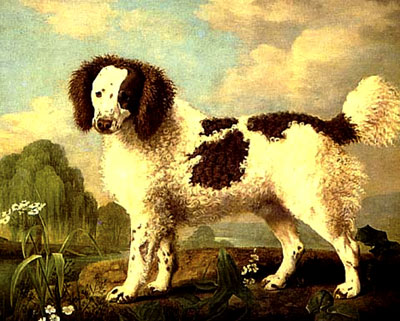
It’s said that if you remember the 60s, you weren’t there, and if you were around in the 70s and remember thinking there was nothing “new” about “New Age,” you were probably already old. If Abbie Hoffman, Jerry Rubin, or the Beatles were to be believed, this was anyone over 30.
We get off track for a moment to be technically accurate. The actual quote was, “Never trust anyone over 30,” and it wasn’t Hoffman, Rubin or the Beatles who said, it, it was Jack Weinberg in an interview for the San Francisco Chronicle in a story about the Free Speech Movement.
And while Wikipedia might not mention it, there was a “New Age” in dogs, as well. The last quarter of the 19th century saw an explosion of interest in dog shows, trials, and in formalizing a huge number of purebred dog breeds – even those that had been around for hundreds of years.
While the wealthy, the aristocratic, and royalty had had such interest for a long time (largely because they had the time and means for it), it was now the growing middle class to take notice. In the late 19th century, it now mattered that there be a way to recognize the ideal for breed – a written breed standard. Consider that in the late 1800s in Germany alone, the German Pinscher, Boxer, all sizes of the Schnauzer, German Shepherd Dog, German Shorthaired Pointer, Dachshund, Weimaraner, German Wirehaired Pointer, Min Pin, Affenpinscher, Rottweiler, and Great Dane were all formalized (information compiled by Rod Humphries and Joanna Walker in their marvelous book, The Doberman Pinscher).
America wasn’t far behind. Between 1878 and 1898, fifty-one breeds were recognized. Conversely, only 24 breeds were recognized in the next twenty year span.
As we get closer to National Purebred Dog Day 2019, take the time not just to marvel at the creature at your feet (or hips, if you have a giant breed), but to think on the people who took notice of breeds that had been in their midst for years. Someone noticed the herding dog moving sheep. Someone bothered to say to someone else, “Hey, we should put down in writing what we think are good attributes in this dog’s breed.” It couldn’t have been easy. Dogs were usually given no more notice than the animals they were entrusted to herd, hunt, or dispatch. In some cases, it was only when the dogs were starting to vanish that someone noticed their absence. Sadly, the attention didn’t come in time to help the Norfolk Spaniel, Braque du Puy, Saint John’s Water Dog, or Tweed Water Spaniel, all now extinct. On a high note, some people who saw something, said something, someone like Matgo Law.
This National Purebred Dog Day, give a thought to the people who made sure you can enjoy the dog you love. Reflect on what it means to be a heritage breeder in the 21st century, or to be in your 70s and still being proactive in a breed club because no one else will do it. And as long as you’re thinking about it, consider dropping a line to someone you know involved in the breed, and just say, “thanks.” It will mean the world to them.
Image of a liver and white Norfolk Spaniel – now extinct, by George Stubbs
